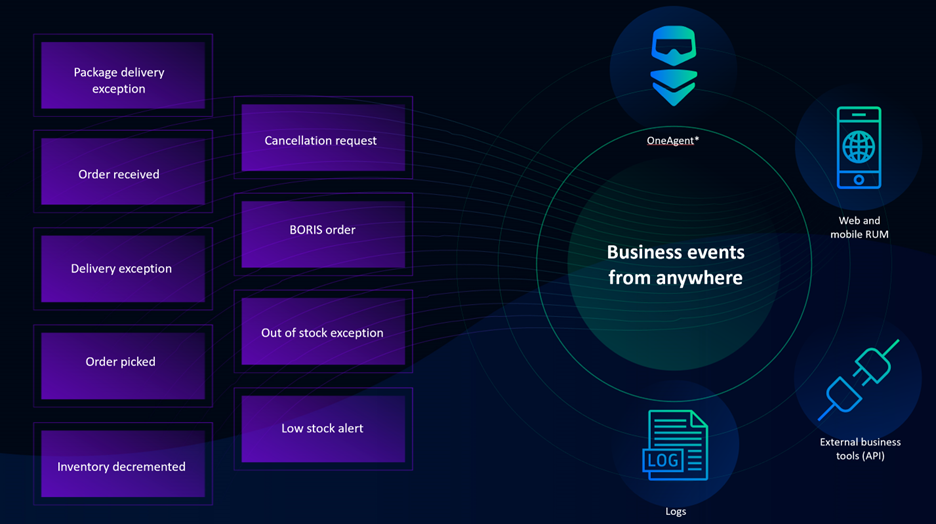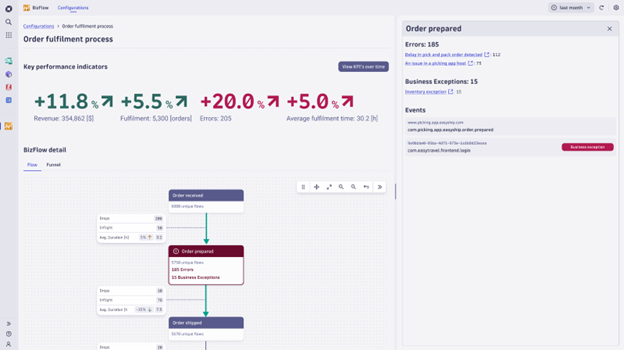Digital experience has long been the focus of e-commerce organizations looking to foster loyalty and improve business outcomes, especially during holiday seasons. Digital experience creates a first impression, and first impressions matter; however, what happens after the conversion also creates a lasting impression, often with a larger impact on loyalty and business outcomes.
Digital experience is often considered the most important customer-facing aspect of digital commerce. This is typically the first thing that comes to mind for IT professionals working in the retail industry when evaluating holiday readiness. While digital experience has many facets, transaction speed usually ranks among the most important. Almost two decades ago, a Google experiment showed that fast-loading transactions are more important to customers than content quality—even small increases in transaction delay result in substantially more abandoned sessions. That lesson remains important. (Though the three-second rule for page load time is often misinterpreted).
CEOs of hybrid retailers prioritize e-commerce growth over in-store shopping, investing heavily in their online storefronts. IT teams spend months preparing for the peak traffic they anticipate will arrive with holiday shopping. However, this is a dynamic target; shopping behaviors are increasingly unpredictable, customer expectations continue to rise, and fierce competition makes cultivating loyalty more challenging than ever. These challenges can be summarized by this quote, paraphrased here from Adobe’s 2021 Digital Trends report: “Your customers are digital, unpredictable, and easy to lose.”
From first to lasting impressions
But there’s more to digital experience than speed. Digital experience, measured by fast, frictionless user journeys, paints an incomplete picture, tracking just the beginning of the customer relationship. What happens after the conversion creates a lasting impression with a larger impact on loyalty and your business.
Let’s shift our focus to the backend systems and business processes, the behind-the-scenes heroes of end-to-end customer experience. These retail-business processes must work together efficiently to orchestrate customer satisfaction:
- Inventory management ensures you can anticipate and meet dynamic customer demand.
- Order processing workflow is triggered by customer orders.
- Order fulfillment is the packaging and delivery of orders to customers.
From a customer perspective, the nuances of these business processes are uninteresting as long as they work. Increasingly, however, order fulfillment is a differentiating customer-facing aspect of the end-to-end customer journey, often with digital touchpoints woven into the experience. The fulfillment clock starts ticking the moment a customer purchases your product. Yet fulfillment is often an area over which retailers have little visibility or control.
Customers value real-time visibility into order status and delivery tracking. However, these fulfillment processes are often strained under the pressure of increased online shopping, next-day delivery expectations, and environment-friendly choices. Flexible delivery options, including “buy online, pick up in store” (BOPIS), curbside pickup, self-service lockers, and gig economy delivery require even greater real-time coordination to commit to competitive and narrowing delivery windows. Decentralized last-mile delivery strategies such as micro-fulfillment centers complicate inventory management and order fulfillment oversight.
Technology to the rescue?
Solutions such as inventory management, order management, and delivery optimization can introduce new challenges:
System integration. To effectively leverage multiple systems to manage orders, inventory, and logistics, retailers must invest in often complex integrations. Unsynchronized and siloed data prevents real-time decision-making and business automation.
Multi-channel logistics. Most retailers work with multiple carriers to handle deliveries, resulting in disparate tracking systems. Aggregating tracking information and presenting it to customers in a uniform way can be a challenge.
Real-time updates: Customers expect real-time visibility into fulfillment milestones beyond order confirmation, including packing, shipping, and delivery notifications. Self-service tracking information, preferred by most customers, becomes especially difficult when there are delays or disruptions.
Embracing business observability
Successful retailers benefit from real-time insights into business processes across all milestones. While each system and service provider might adhere to SLOs, the end-to-end health of the process is greater than the sum of its parts. How can you discover optimization opportunities, patterns behind recurring disruptions, or the root cause of an anomaly? The answer lies in the context—connecting business process KPIs to system performance becomes the starting point for real-time business/IT collaboration and automated remediation. The resulting agility supports targeted responses to process disruptions, anomalies, and bottlenecks as they happen, not when daily or weekly reports are produced, not when your call center is inundated, not when your Net Promoter Score (NPS) plummets. To accomplish this transformation, IT teams need to expand their observability scope to include business KPIs.
How Dynatrace can help
Recent platform innovations have made monitoring end-to-end business processes such as order fulfillment easier. Consider these requirements for effective business observability.
- Business data must be accurate to instill the confidence to make business decisions.
- Business data can come from many sources, including OneAgent, RUM, external business systems, and log files.
- Business data must be easy to access without modifying code to reduce the burden on development and maintenance resources.
- Business data must remain granular over long retention periods to support long-running business processes and “needle in the haystack” queries.
- Business data must be unified, regardless of the source or data type.
- Business data must be easily queried to answer unanticipated questions without upfront indexing.
Business events deliver real-time business observability to business and IT teams with the precision and context to support data-driven decisions and improve business outcomes. Business events extract critical business data from your IT systems with lossless precision and can illuminate dark data quickly and easily, wherever that data exists.

Order fulfillment process example
Retail order fulfillment is a good example of business process monitoring, a use case enabled by these innovations. Fulfillment processes vary between retailers, with subprocesses that might introduce branches and loops. It’s a good practice to identify process milestones as a starting point; these should be relatively consistent. For example:
- Purchase confirmation
- Order picked from the warehouse
- Shipping label created
- Order accepted by the delivery agent
- Delivery confirmation
- Survey completed
Once you’ve defined the list of milestones, identify where to capture the data.
- Purchase confirmation: E-commerce platform (via OneAgent)
- Order picked: Warehouse management system (via OneAgent)
- Shipping label created: Warehouse management system (via OneAgent)
- Order scanned by delivery agent: Agent logistics system (via API)
- Delivery confirmation: Agent logistics system (via API)
- Survey: VoC solution (via API or database query)
The Business Flow app, developed using Dynatrace® AppEngine, makes it easy to configure business process milestones for an end-to-end view of process throughput, delays, and anomalies.

Become a business observability champion
Want to see how it’s done? Watch this 30-minute webinar to see how Mitchells & Butlers leverages real-time, context-rich analytics to optimize process efficiencies, discover and respond to dynamic customer behavioral patterns, and drive confident business decisions.



Looking for answers?
Start a new discussion or ask for help in our Q&A forum.
Go to forum